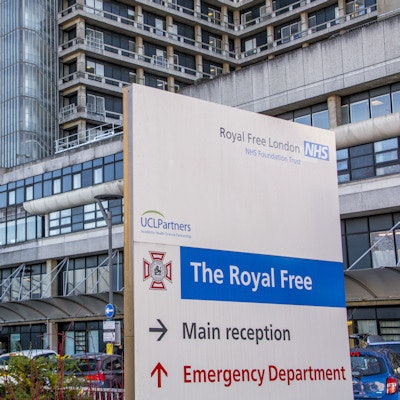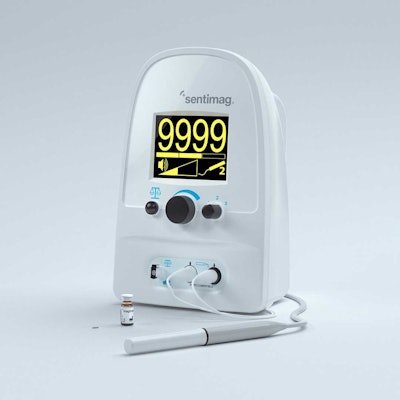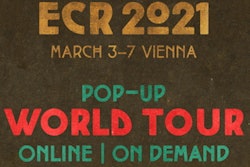
Magnetic seeds are a feasible, cost-effective, and safe method of localizing breast lesions, and they're proving popular with both patients and breast surgeons, according to new research from the Royal Free London NHS Foundation Trust.
"Although they (magnetic seeds) are more expensive than the more traditional wire-guided localization in terms of unit cost, the uncoupling of radiology and surgical department schedules has proven to be hugely advantageous (for the use of this technology) at our institution during the COVID-19 epidemic, during which time services were reorganized across different sites," noted radiology specialist registrar Dr. Adam Brown, radiology lead for breast imaging Dr. Anmol Malhotra, and colleagues at the Royal Free.
The group's aim was to evaluate the use of the magnetic seeds to localize nonpalpable breast lesions prior to surgery. They shared their experiences at ECR 2021.
Excision of nonpalpable breast lesions is usually directed by preoperative ultrasound-guided placement of a wire into the lesion. This technique was developed 50 years ago and is still the gold standard in breast cancer removal, but it has several shortcomings.
"Perhaps most distressing for the patient is that they are left with a wire in the breast which protrudes from the chest and stays in place until the time of surgery," the authors wrote in an e-poster. "Not only is this visible and palpable to the patient, leading to understandable anxiety, there is also a risk of dislodgement, and for this reason the surgery must be performed on the same day."
How magnetic seeds work
Magnetic seeds are 5 x 1 mm paramagnetic steel and iron oxide seeds that come preloaded on to an 18-gauge 7 cm or 12 cm introducer needle and are deployed under stereotactic or ultrasound guidance, they explained.
When the seed is placed within a lesion, it is inactive and only becomes detectable when the accompanying probe that detects the magnetic signature of the seed is passed near the lesion. An audio tone changes, depending on proximity to the seed, thus directing the surgeon straight to the lesion.
 An example of the accompanying probe used by breast surgeons to detect the signal emitted by the magnetic seed during surgery.
An example of the accompanying probe used by breast surgeons to detect the signal emitted by the magnetic seed during surgery."Magnetic seeds overcome many of the main limitations of wire localization," they added. "They are completely concealed within the breast, which means that unlike with conventional wires, the patient will not be able to see or feel it. With no risk of displacement, it can be deployed weeks or months in advance with decoupling of the localization procedure from the day of procedure, with obvious benefits in scheduling flexibility. Multiple magnetic seeds can also be used to bracket lesions prior to surgery, with a minimum separation distance of only 2.5 cm."
Magnetic seeds also provide increased levels of accuracy when compared to wire-guided localization. The rate of second surgery with wire-guided localization is around 25%, but with magnetic seed localization, it is as low as 6.5%, Brown and colleagues stated.
A recent German study by F. Kühn et al (In Vivo, 2020 May-Jun; 34(3):1159-1164) shows that the use of magnetic seeds results in a reduced operative time (14 minutes) compared with wires (17.5 minutes). The group also reported significantly more pain during coughing, breathing, and movement in patients with wire-guided localization compared to magnetic seeds.
A large study by Miller et al (Ann Surg Oncol, November 2020) proved a high magnetic seed retrieval rate at surgery and a low re-excision rate. Additionally, a study by Simons et al (Ann Surg Oncol, January 2021) found that magnetic seeds can also be used safely and effectively for marking lymph nodes, such as in postneoadjuvant chemotherapy. Clinicians also find magnetic seeds easier to use than wires, as demonstrated in the study by Micha et al (Breast Cancer, January 2021,Vol. 28:1, pp. 196-205).
Clinical experience
A disadvantage of magnetic seeds is that they are not suitable for use with MRI due to associated artifact, the degree of which is much greater than that seen with main alternatives of Savi Scout and radiofrequency identification devices, said the Royal Free team. Furthermore, nonmagnetic polymer surgical retractors must be used at the time of surgery because metal ones interfere with the magnetic field.
Magnetic seeds are most commonly inserted under ultrasound guidance in a similar way to the standard wire-guided localization technique. The patient is asked to give verbal consent for the procedure, the main risks being pain/discomfort, bleeding, infection, and misplacement of seeds.
Standard preprocedure checks are performed, such as review of recent blood results as well as medication and allergy checks. The lesion is identified on ultrasound (or stereotactically) and local anesthetic is infiltrated into the skin. The preloaded Magseed needle is then passed through the anesthetized area, again under image guidance, until the tip of the needle is within the center of the lesion. At this point, the seed is deployed from the tip of the needle and the needle is removed.
"The seed is clearly seen as a rectangular area of echogenicity on ultrasound. At our institution, a postprocedure mammogram is performed to confirm satisfactory position of the seed within the lesion," Brown and colleagues said. "The procedure is usually very well tolerated with complications, such as a hematoma, very rare."
The Royal Free's experience of using magnetic seeds has been positive.
"Our breast services are split across three different outpatient sites, with one site performing surgery. Magnetic seeds offer the advantage of being placed by the team making the initial diagnosis rather than at a separate site," they continued. "Our breast surgery services have been temporarily moved to a private sector 'clean' site. This means that a radiologist would have to travel to place the wires at this remote site on the day of surgery, but the use of magnetic seeds allows the localization to be done in advance at the initial diagnostic center, which is more convenient for all concerned parties."
Editor's note: The number of the ECR e-poster is C-13781, and you can access it via the EPOS section for the congress.



















